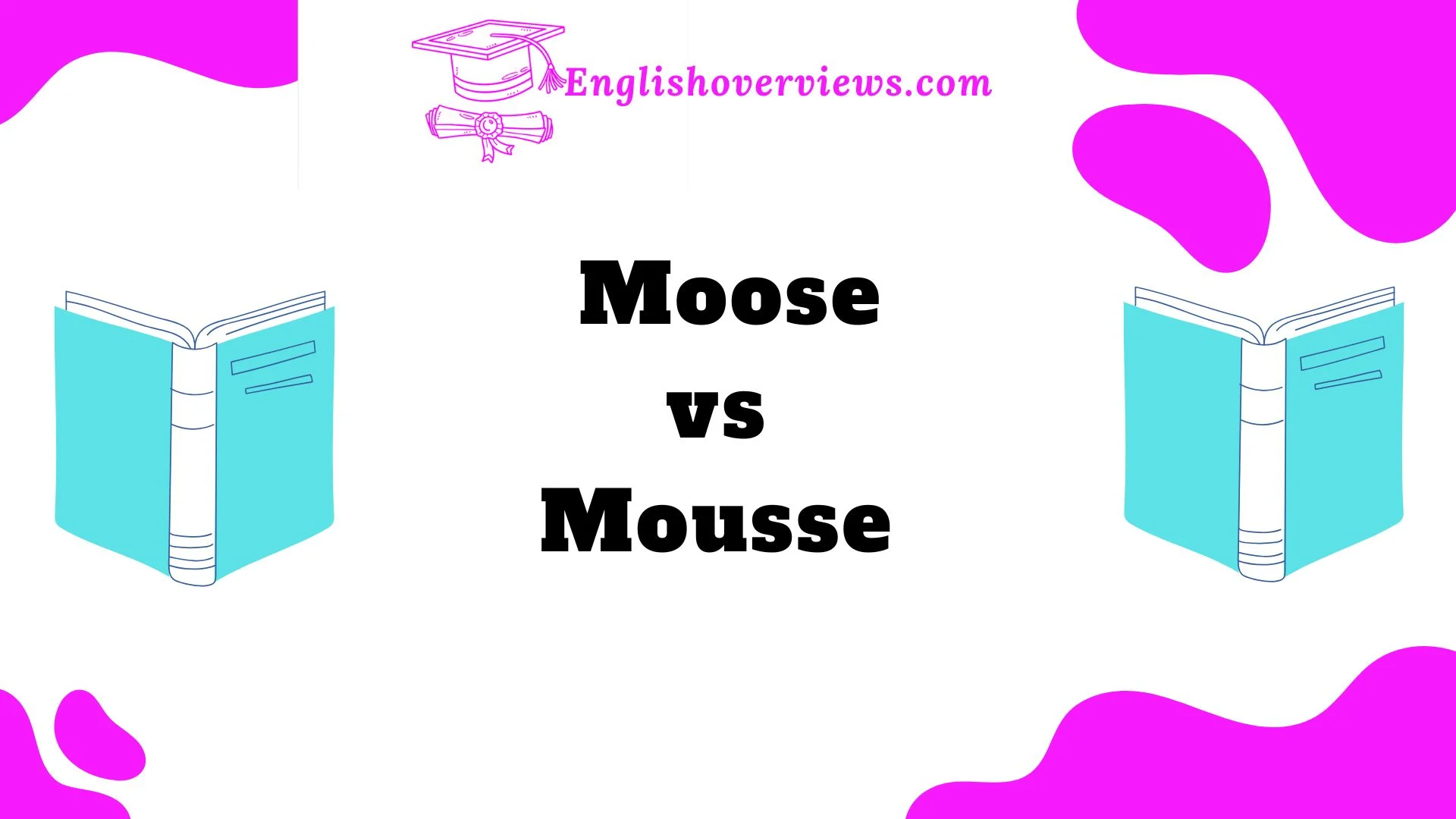Have you ever paused while writing or speaking, wondering if you meant moose or mousse? You’re not alone! Homophones-words that sound alike but have different meanings and spellings-can confuse even the most seasoned language enthusiasts.
In this article, we’ll break down the homophones “moose” and “mousse” in a way that’s easy to understand and hard to forget. Whether you’re an English learner, a writer aiming for clarity, or just someone who loves words, this guide has something for you.
We’ll dive into definitions, origins, example sentences, and key differences between these two terms. You’ll also find mnemonics, fun facts, and actionable tips to ensure you never mix them up again.
Let’s embark on this journey to untangle the confusion between these two homophones and have some fun along the way!
What is a Moose?
Definition
A moose is a large mammal belonging to the deer family (Cervidae). Known for its impressive antlers and towering size, the moose is native to forests across North America, Europe, and Asia.
Origin of the Word “Moose”
The word “moose” comes from the Algonquian term “moos”, meaning “twig-eater” or “he who strips bark off trees.”
- Scientific Name: Alces alces
- Plural Form: The plural of moose is still moose. (Yes, it’s one of those quirky English rules!)
Physical Characteristics of a Moose
| Feature | Details |
| Height | Up to 7 feet (2.1 m) |
| Weight | 800-1,500 pounds |
| Antlers | Can span up to 6 feet |
| Diet | Herbivore (plants, bark, twigs) |
Example Sentences Using “Moose”
- We spotted a moose near the riverbank during our hike.
- A fully grown moose can weigh as much as a small car.
- The moose’s antlers were an impressive sight.
Interesting Facts About Moose
- Moose are excellent swimmers and can hold their breath underwater for up to 30 seconds.
- Their large nostrils help them close off their airways while diving underwater.
- Despite their size, moose are surprisingly agile runners, reaching speeds of up to 35 mph.
Real-World Example: The Moose in Canada
In Canada, moose play a significant role in the ecosystem and local culture. They are often featured on souvenirs, stamps, and tourism campaigns. Tourists travel from around the world to catch a glimpse of these majestic creatures in their natural habitat.
What is a Mousse?
Definition
A mousse is a soft, airy dish often served as a dessert or used as a styling product for hair. The term can refer to:
- Edible mousse: A light and creamy dish, often chocolate or fruit-flavored.
- Hair mousse: A foamy hair styling product used to add volume and hold.
Origin of the Word “Mousse”
The word mousse comes from the French term for “foam.” It perfectly describes the light, fluffy texture of both the food and hair product.
Types of Mousse
| Type | Description | Example |
| Chocolate Mousse | Rich, creamy dessert | Served in fine dining |
| Fruit Mousse | Light, tangy, fruity dessert | Mango mousse |
| Hair Mousse | Foamy hair styling product | Used for curls and volume |
Example Sentences Using “Mousse”
- She prepared a delicious chocolate mousse for dessert.
- I applied hair mousse to keep my curls in place.
- The mousse had a velvety texture and was bursting with flavor.
Fun Facts About Mousse
- The earliest mousse recipes date back to 18th-century France.
- Hair mousse was first introduced in the 1980s and quickly became a hairstyling staple.
- The world’s most expensive mousse was sold in a luxury restaurant for over $1000!
Case Study: The Rise of Mousse in Modern Cuisine
Many Michelin-starred chefs have elevated mousse to artistic levels, creating desserts that look like sculptures while still maintaining their signature airy texture.
Moose vs. Mousse: Key Differences
Side-by-Side Comparison Table
| Feature | Moose | Mousse |
| Part of Speech | Noun | Noun |
| Meaning | Large mammal | Airy food or hair product |
| Pronunciation | /muːs/ | /muːs/ |
| Context | Wildlife, nature | Culinary, beauty |
| Plural Form | Moose | Mousses |
Mnemonic to Remember the Difference:
- “A moose roams the woods, while mousse stays in the fridge.”
Common Mistakes:
- Writing “I saw a mousse in the forest.” (Incorrect)
- Saying “I ate a chocolate moose.” (Incorrect)
Common Mistakes and How to Avoid Them
- Pronunciation Confusion: Both words sound identical. Focus on context clues.
- Spelling Errors: Remember, moose has double “o,” and mousse has a double “s.”
- Visual Clues: Picture a moose in the forest and mousse in a glass cup.
Quick Tip:
“If it’s fluffy and edible, it’s mousse. If it’s tall with antlers, it’s moose.”
Fun Facts and Trivia
- Moose Antlers: Only male moose grow antlers, and they shed them every winter.
- Famous Mousse Dish: Chocolate mousse became popular in the 1960s.
- World Records: The largest moose ever recorded weighed over 1,800 pounds!
Conclusion
Understanding the difference between moose and mousse doesn’t have to be a headache. By keeping their meanings, usage, and context in mind, you’ll avoid mix-ups effortlessly.
Remember:
- Moose: Forest, antlers, wildlife.
- Mousse: Dessert, hair product, creamy texture.
Next time you hear these homophones, you’ll know exactly what they mean.
FAQs
1. Is mousse always edible?
No, mousse can also refer to a hair styling product.
2. Can you own a moose as a pet?
In most places, it’s illegal to own a moose due to their size and needs.
3. Are moose dangerous?
Moose are generally calm but can become aggressive if provoked.
4. What’s the easiest way to remember the difference?
“A moose has antlers; mousse has air bubbles.”
5. Can I make mousse at home?
Absolutely! Chocolate mousse is a classic, easy-to-make dessert.

Alyan Ashraf is the creative mind behind English Overviews, a platform dedicated to helping learners master the English language. Passionate about education and language development, Alyan specializes in simplifying complex English concepts, making learning accessible for students of all levels.











